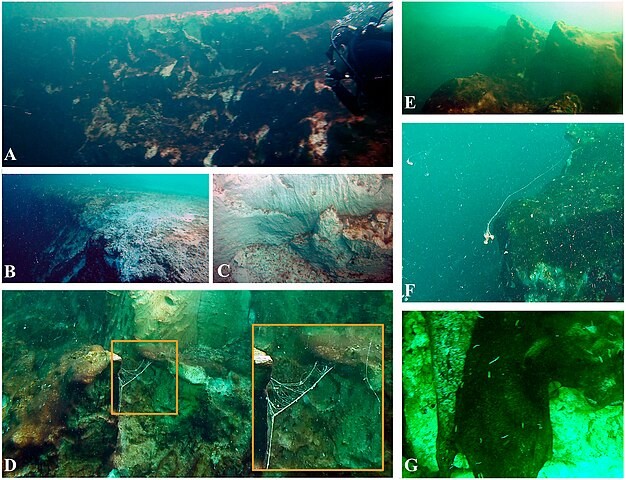
(Photo : Wikimedia Commons/Juan C. Alcérreca-Huerta, Teresa álvarez-Legorreta, Laura Carrillo, Laura M. Flórez-Franco, Oscar F. Reyes-Mendoza and Joan A. Sánchez-Sánchez)
The Taam Ja' Blue Hole in Mexico is the deepest known underwater sinkhole in the world. In fact, scientists haven't reached the bottom part yet.
Taam Ja' Blue Hole in Mexico: The Deepest Blue Hole
According to a new study, a scuba diving excursion was carried out on Dec. 6, 2023, to ascertain the environmental conditions that were prevalent at the Taam Ja' Blue Hole (TJBH). A conductivity, temperature, and depth (CTD) profiler, which has a collection of sensors that read and transmit water parameters to the surface in real-time via a cable, was used by the researchers to take measurements during the expedition. As per the data, the Taam Ja' blue hole is "the world's deepest known blue hole, with its bottom still not reached."
The TJBJ, located in Chetumal Bay off the southeast coast of the Yucatan Peninsula, appears to be at least 1,380 feet (420 meters) below sea level, according to recent surveys. This is 390 feet (119 meters) deeper than the previous record holder, the 990-foot-deep (301 m) Sansha Yongle Blue Hole, commonly known as the Dragon Hole, in the South China Sea. It is also 480 feet (146 m) deeper than scientists previously reported when they first discovered the blue hole in 2021.
ALSO READ: Kitum in Kenya: What's Inside the Deadliest Cave That Gave Rise to Ebola, Marburg Virus
The profiler also pointed out many water layers inside the blue hole, such as one below 1,312 feet (400 m), where the salinity and temperature were similar to those of the neighboring coastal reef lagoons and the Caribbean Sea.
According to the study, this implies that the TJBH might be connected to the ocean through a secret system of caves and tunnels.
An echo sounder, which projects sound waves into the ocean and measures the speed at which they return to measure distance, was used to take the first measurements of the TJBH. However, because each hole varies in shape and may not be completely vertical, echo sounding techniques are limited in blue holes due to variations in water density.
"Confirmation of the maximum depth was not possible due to instrument limitations during the scientific expeditions in 2021," the researchers added.
Since the CTD equipment was limited to operating at 1,640 feet (500 meters) below the surface, it was also unable to locate the bottom of the blue hole in the most recent experiment. The profiler was lowered to that depth by scientists, but the analysis suggests that the cable it was linked to may have floated on submerged currents or struck a ledge, stopping the equipment in its tracks 1,380 feet below the surface.
Subsequently, the scientists intend to "explain the maximum depth of TJBH and the potential for it to form a component of an underwater complex and possibly linked network of caverns and tunnels."
What Are Blue Holes?
Blue holes, also known as sinkholes, are vertical caverns filled with water that are found in coastal areas where the bedrock is composed of soluble materials like gypsum, limestone, or marble. They develop as a result of surface water seeping through the rock, eroding minerals and enlarging fissures until the rock finally collapses. Notable instances are the Great Blue Hole in Belize, the Bahamas' Dean's Blue Hole, and Egypt's Dahab Blue Hole.
Blue holes provide information on life that may have existed on Earth millions of years ago, when the oceans were anoxic, or oxygen-free.
RELATED ARTICLE: Ice Age Cave Entrance in Germany Discovered 16,000 Years After It Was Last Occupied
Check out more news and information on ENVIRONMENT & CLIMATE in Science Times.


![Some Brain-Injured Patients Who Died After Life Support Was Withdrawn May Have Survived, Recovered Some Level of Independence 6 Months After Injury [Study]](https://1721181113.rsc.cdn77.org/data/thumbs/full/53613/89/56/50/40/some-brain-injured-patients-who-died-after-life-support-was-withdrawn-may-have-survived-recovered-some-level-of-independence-6-months-after-injury-study.jpg)











